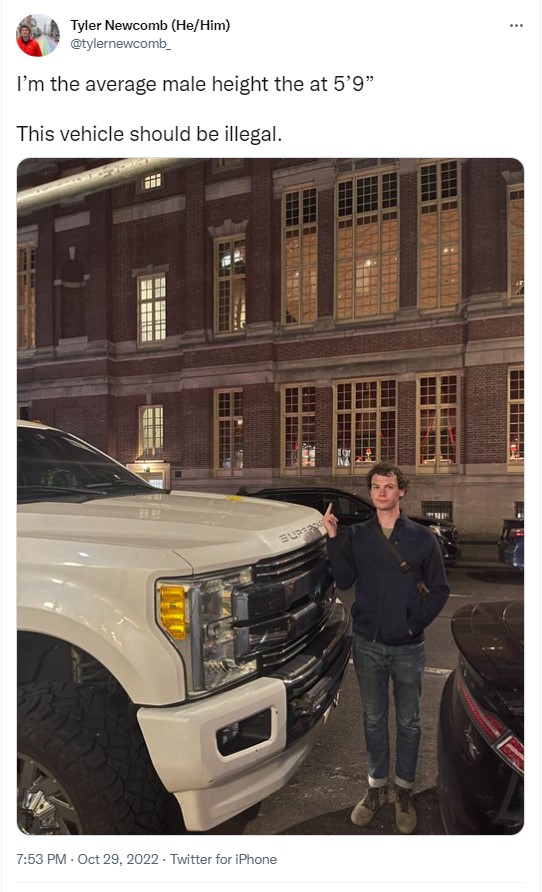This has been the law of the land since 1791. It was still the law but not formally acknowledged prior to then.
The language is very clear to anybody that is educated in English. Chances are that Miguel, who is not a native speaker of English can parse the 2nd amendment and understand exactly what it means per the rules of English.
So how did we end up in a place where there exists so many infringements? There is no other right in the Constitution that requires government permission to exercise it. You don’t need the government’s permission to post online. You don’t need the governments permission to move from state to state. You don’t need the governments permission to be secure in your papers and person.
These rights exist. The government needs permission in order to infringe on our rights. Where did they get it?
In the early history of the country we had small, individual locations pass infringements. These were allowed to stand because the people either did not care or their complaints were not heard by the courts or the government. There were so few of these laws that the Supreme court opinion in Bruen said that they were outliers and should be ignored.
In 1911 the most famous gun control act was passed. The one that lead to all the others. The Sullivan Act. This law required government permission to possess firearms.
The act was passed based on the idea of stopping people from having guns in violent areas. The reality was that it allowed for the Tammany Hall democrats to disarm all that opposed them while still putting muscle on the street as they wished. The law was always unfairly applied.
Prior to 1911, almost all gun control was based on disarming blacks. They were passed as “safety measures” and they did provide safety, for those attacking newly freed slaves. It wasn’t uncommon for the sheriff to show up and search a black home for “illegal guns”, confiscate the guns they found and for the Klan to arrive that evening to do violence to that household.
The level of corruption in gun control laws never goes away.
The first federal gun control law was the NFA in 1934. This was passed as a “safety measure”. The original goal was to ban all the things that “The Mob” were using. This was machine guns, pistols, sawed off shotguns, and silencers. But congress knew that this was unconstitutional.
Much as Obama Care was unconstitutional when it was a penalty for not having health insurance but it was constitutional when it was a tax, banning guns was known to be unconstitutional, but charging a tax to transfer or register one was constitutional. They took pistols out of the NFA but created a new class of firearm, short barrelled rifle, to keep people from calling a pistol a rifle to avoid the tax.
Because it was “just a tax” in the beginning, being caught with an unregistered NFA item merely required you register and pay your tax. It was only much later that having an NFA item without the tax stamp became an actual crime that you were prosecuted for.
This was challenged in 1936 when the supreme court issued its Miller opinion. The opinion was issued without anybody there to represent Miller. The question before the court was whether the NFA was “an attempt to usurp police power reserved to the States” and whether the NFA’s requirements to register and have taxed short barrelled shotguns was counter to the second amendment.
The court did not look at anything else.
In the absence of any evidence tending to show that possession or use of a ‘shotgun having a barrel of less than eighteen inches in length’ at this time has some reasonable relationship to the preservation or efficiency of a well regulated militia, we cannot say that the Second Amendment guarantees the right to keep and bear such an instrument. Certainly it is not within judicial notice that this weapon is any part of the ordinary military equipment or that its use could contribute to the common defense. Aymette v. State of Tennessee, 2 Humph., Tenn., 154, 158.
With these words, the supreme court gutted the second amendment for the next 90 years.
The court focused on the right to bear arms meaning that the militia, all the people, needed to be able to have military arms. Since nobody told the court that shotguns were used in a military setting (“In the absence of any evidence…”) they found that short barrelled shotguns were not protected under the second amendment.
Implicit in their decision was the implication that if Miller had been caught with a Tommy Gun and that was what had been brought to the courts attention, then the NFA would have been found unconstitutional. It is unknown if the court would have struck down all of the NFA or only that part that was in question.
This opinion lad to the passage of many more gun control laws. The first challenges failed. In general these laws were passed where the government felt like they were “a good idea”. The district courts were often leaned the same way, and it wasn’t uncommon for the circuit court to also lean in the same directions.
This lead to many cases being dismissed for lack of standing. The lower courts ruled that because the second amendment referred to militia and since the person in question was not a member of the militia, then the 2nd amendment did not apply to the challenger. It went so far as to some states passing anti-militia laws.
The second method used was “level of scrutiny”. The gist is that yes, the law infringes on the second amendment but it is balanced by the needs of the government. In the eyes of the lower courts, an infringement was constitutional if the government said that it was needed for a good cause.
This lead to “you don’t need an AR-15 so it is constitutional to ban them.” and “You need to show good cause before you can have permission to have a gun at your premise” and “As long as we let you buy SOME guns it is ok to ban the rest of them.”
During this time, the different states worked hard to keep those few cases that did have standing in the courts eyes from making it to the Supreme Court. The state might fight tooth and nail through the appeals process claiming that people would die and the streets would run red with blood if their infringement wasn’t allowed to stand. And if they lost at the circuit court level they would look at what might happen if the case was heard by the Supreme Court and go, “you know what, good fight, you won.”
This lead to the interesting situation where it was sometimes better for the state to lose at the circuit court level because that gave them control of the appeal.
This started to change with Heller. In Heller the Supreme Court ruled that the second amendment was an individual right, not a right reserved for the militia which was now the national guard which was now the states police powers.
Heller was challenging D.C.’s law that banned the carrying of an unregistered firearm, even within the home. And that any resident of D.C. that did lawfully own a firearm had to keep it unloaded and disassembled or bound by a trigger lock. Because D.C. would not allow him to register a firearm Heller could not legally carry it, even in his own home.
The district court dismissed the case. It was appealed and the Second Circuit court ruled that the DC ban was, indeed, unconstitutional. Amazingly DC appealed to the Supreme court which heard the case and ruled in favor of Heller.
1. The Second Amendment protects an individual right to possess a firearm unconnected with service in a militia, and to use that arm for traditionally lawful purposes, such as self-defense within the home. Pp. 2–53.
(a) The Amendment’s prefatory clause announces a purpose, but does not limit or expand the scope of the second part, the operative clause. The operative clause’s text and history demonstrate that it connotes an individual right to keep and bear arms. Pp. 2–22.
This was the end of courts dismissing 2A cases for lack of standing.
Shortly thereafter the Court heard McDonald. This case stopped “no issue”.
Still the courts continued to use means-end balancing which allowed anti-gun states to pass infringements and then justify those infringements because government knows best how to keep you safe. Remember, when seconds count, the police are only minutes away.
Bruen was the end of the two stage analysis.
(1) Since Heller and McDonald, the Courts of Appeals have developed a “two-step” framework for analyzing Second Amendment challenges that combines history with means-end scrutiny. The Court rejects that two-part approach as having one step too many. Step one is broadly consistent with Heller, which demands a test rooted in the Second Amendment’s text, as informed by history. But Heller and McDonald do not support a second step that applies means-end scrutiny in the Second Amendment context. Heller’s methodology centered on constitutional text and history. It did not invoke any means-end test such as strict or intermediate scrutiny, and it expressly rejected any interest-balancing inquiry akin to intermediate scrutiny. Pp. 9–15
The states and the courts as well as many gun rights organizations have responded to this major change in precedent. GOA, FPC and other organizations have filed suits to overturn long standing laws. In some cases governmental entities have stepped up and made changes to laws, regulations and procedures to bring them in line with the Bruen decision.
The response from the infringers has been interesting, to say the least.
The responses fall into a number of categories:
- Opps, so sorry, we’ve fixed it.
- We are working to correct it, give us time
- We think there is room within the opinion for us to keep our infringements.
- FU SCOTUS, we’re going to infringe still harder!
Along with the states going in this direction, there have been a few court cases that have not gone as expected and these are things to keep an eye on.
In the Central District of California Judge George H Wu states that the plain text of the second amendment “plainly does not” cover the “self-manufacture of firearms”.
The goal here is to create a carve out from the second amendment. To do as much as possible to limit what is covered by the 2nd.
In addition the state of Maryland is arguing that there were historic bans on particularly dangerous weapons.
Others are arguing that the date to consider for “tradition” of firearm restrictions should be the late 1800’s with the passage of the 14th amendment rather than 1791 when the second amendment was ratified.
We need to stay vigilant to how the infringers are going to manipulate language and meaning to continue to infringe.
And we can expect the anti-gun courts to slow walk any decisions that are made.
Like this:
Like Loading...





